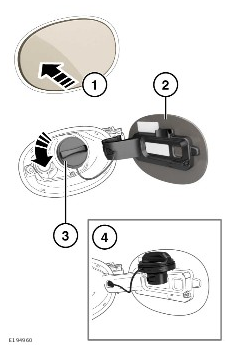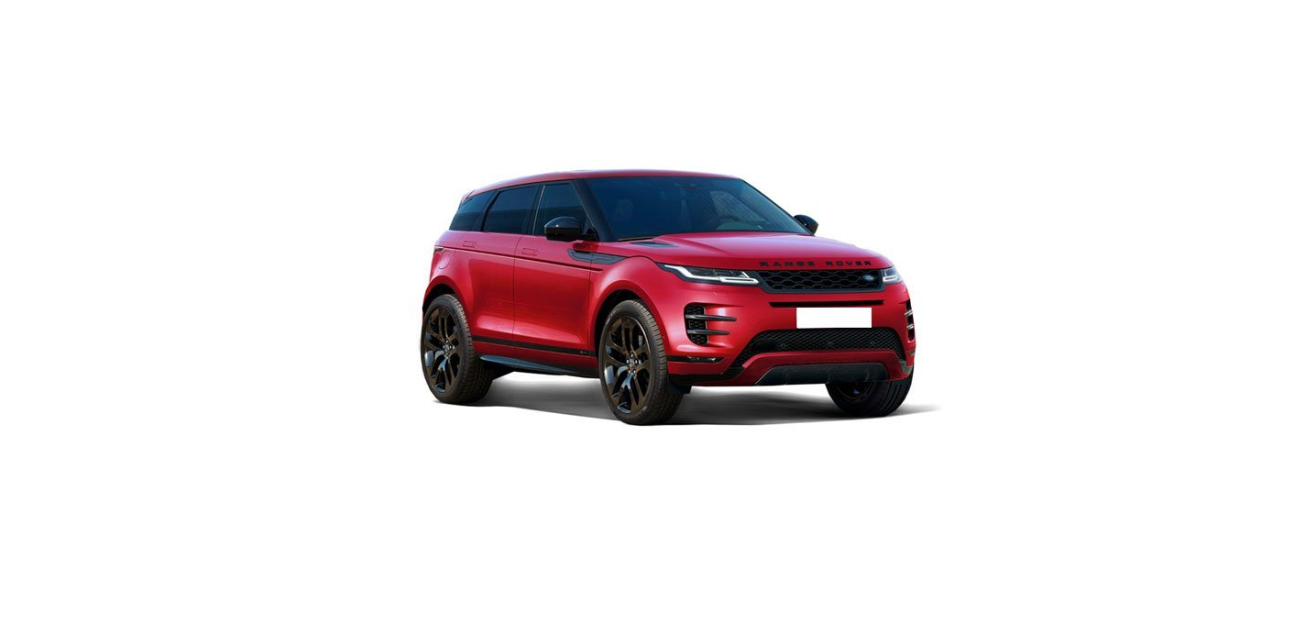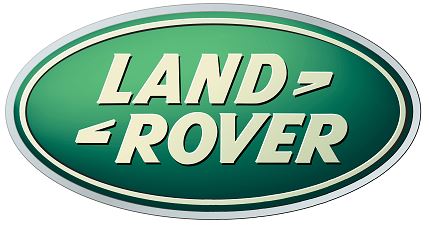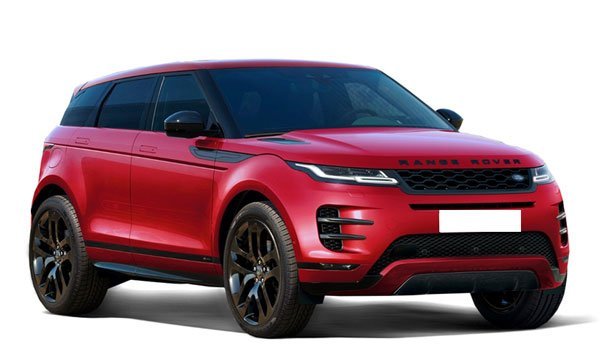2022 Land Rover New Range Rover Evoque Fuel And Refueling
SAFETY PRECAUTIONS
Make sure that all the warnings listed below have been read and understood. Failure to observe the warnings may cause a fire or explosion, potentially resulting in serious injury or death.
Do not smoke, use an exposed flame, or cause sparks while refueling.
Avoid exposing the fuel gases to any potential sources of ignition.
Switch off the engine when refueling, as it is both a source of extreme temperature and electrical sparks.
When refueling, switch off any personal electronic devices such as cell phones or music players.
Do not overfill the fuel tank, as this may cause spillage when the vehicle is driven. Spillage may also occur if the fuel expands in high ambient temperatures.
Only use containers specifically designed for carrying fuel and always remove them from the vehicle to fill them.
GASOLINE ENGINED VEHICLES
Use high-quality fuel with detergent. Low-quality fuel can damage the engine and reduce engine performance.
Do not use leaded fuels, fuels with lead substitutes, e.g., manganese-based, or fuel additives. The vehicle’s emission control systems can be adversely affected, which may affect the vehicle’s warranty coverage.
Fuel system cleaning agents should not be used unless approved by the vehicle manufacturer. Inadequate cleaning agents may damage the fuel system.
OCTANE RATING
Federal law requires that gasoline octane ratings are displayed on the fuel pumps. The vehicle manufacturer recommends the use of premium unleaded gasoline with a minimum octane rating of 91 AKI (Anti-Knock Index). Using the correct fuel specification helps to maintain the vehicle’s performance, fuel economy, and driveability. If premium unleaded fuel is not available, use unleaded fuel with a lower octane rating, down to a minimum of 87 AKI. Using lower octane-rated fuel may reduce the engine’s performance, increase fuel consumption and can cause an audible engine knock and other driveability problems.
Do not use fuels with an octane rating lower than 87 AKI, as severe engine damage may occur. Consult a retailer/authorized repairer if a heavy persistent engine knock is detected, even if using fuel to the recommended octane rating. Urgently consult a retailer/authorized repairer if an engine knock is detected while holding a steady speed on level roads. Failure to do so is misuse of the vehicle, which is not covered by the vehicle’s warranty.
An occasional light engine knock when accelerating or climbing hills is acceptable.
Do not use leaded fuels, fuel additives, or fuels with lead substitutes, e.g., manganese-based fuels. Doing so may adversely affect the vehicle’s exhaust emissions control systems and the vehicle’s warranty.
ETHANOL
Do not use E85 fuels with 85% ethanol content, as serious engine and fuel system damage can occur.
Do not use fuels containing more than 15% ethanol. Higher ethanol content can damage the vehicle’s engine and fuel system. Fuels containing up to 15% ethanol may be used, e.g., E10 and E15.
METHANOL
Wherever possible, avoid using fuel containing methanol. Using fuel containing methanol may cause serious engine and fuel system damage, which is not covered by the vehicle’s warranty.
METHYL TERTIARY BUTYL ETHER (MTBE)
Unleaded fuel containing an oxygenate known as Methyl Tertiary Butyl Ether (MTBE) can be used. The ratio of MTBE to conventional fuel must not exceed 15%. MTBE is an ether-based compound derived from gasoline. MTBE has been specified by several refiners as the substance to enhance the octane rating of fuel.
SULFUR CONTENT
Using an incorrect specification of fuel will cause serious damage to the engine and the exhaust after-treatment system. The vehicle’s warranty does not cover this. If in doubt, contact a retailer/authorized repairer for advice. Vehicles with a diesel engine require the use of Ultra Low Sulfur Diesel (ULSD) fuel. The sulfur content is in accordance with the American Society for Testing and Materials standard ASTM D975 ULSD, or the World Wide Fuel Charter (WWFC) standards. The fuel must also meet the Environmental Protection Agency (EPA) standards. This vehicle must be operated only with ultra low sulfur diesel fuel (that is, diesel fuel meeting EPA specifications for highway diesel fuel, including a 15 ppm sulfur cap).
REFORMULATED GASOLINE
Reformulated gasoline is specially formulated to help further reduce the vehicle’s exhaust emissions. The vehicle manufacturer fully supports all efforts to protect and maintain the ambient air quality, and encourages the use of reformulated gasoline, where available.
RUNNING OUT OF FUEL
Avoid running out of fuel. Doing so can cause damage to the vehicle’s engine, fuel and emission control systems. If the vehicle does run out of fuel, a minimum of 1.1 U.S. gallons (4 L) is required to restart the engine. The vehicle should be left with the ignition on for 5 minutes after refueling, before attempting to restart the engine. The vehicle needs to be driven 1 – 3 miles (1.6 – 5 km), in order to reset the engine management and monitoring systems.
If the vehicle does run out of fuel, seeking qualified assistance is advisable.
WATER IN FUEL
If the instrument panel displays a warning message, an excessive amount of water has been collected in the fuel system. In this event, consult a retailer/authorized repairer as soon as possible. Water in fuel can damage engine components or the fuel system.
FUEL FILLER FLAP
Take note of all warnings and instructions given on the label affixed to the inside of the filler flap. Failure to do so may result in injury or death.

The fuel filler flap is located on the right side of the vehicle, at the rear. To operate, proceed as follows:
- Press and release the rear of the fuel filler flap to unlatch.
- Pull the flap open. The label on the inside of the flap indicates the correct fuel for the vehicle.
- Turn the cap counterclockwise to undo it.
- Use the securing clip to keep the filler cap out of the way while fuelling.
When replacing the cap, turn it clockwise until the ratchet clicks.
To close the filler flap, push the flap until it is securely latched.
FUEL FILLER
Make sure the relevant safety warnings and cautions have been read and understood before operating the fuel filler. See SAFETY PRECAUTIONS.
Take note of all warnings and instructions given on the label affixed to the inside of the fuel filler flap.
When refueling, make sure that all of the windows, doors and the sunroof are fully closed. Use extreme care and caution if young children or animals are in the vehicle. Failure to do so may result in injury or death.
Do not attempt to fill the fuel tank past its maximum capacity. If the vehicle is parked on a slope, or in direct sunlight or high ambient temperatures, expansion of the fuel can cause spillage. An accidental fuel spillage can lead to a fire or explosion, potentially resulting in serious injury or death.
Make sure that the fuel filler nozzle is fully inserted into the filler neck. If the nozzle is inserted loosely, fuel spillage may occur. An accidental fuel spillage can potentially lead to a fire or explosion, resulting in serious injury or death.
Never leave the fuel pump nozzle unattended while refueling. Doing so may result in fuel spillage. An accidental fuel spillage can potentially lead to a fire or explosion, resulting in serious injury or death.
Check the fuel pump information carefully to make sure that the correct fuel is used to refuel the vehicle. Inadequate fuel can reduce engine performance and may cause permanent damage to engine components.
If the vehicle is filled with incorrect fuel, it is essential to seek qualified assistance before starting the engine. Inadequate fuel can reduce engine performance and may cause permanent damage to engine components. Filling station pumps are equipped with automatic cut-off sensing to avoid fuel spillage. Fill the tank until the filler nozzle automatically cuts off the supply. Do not attempt to fill the tank beyond this point.
FUEL TANK CAPACITY
Avoid the risk of running out of fuel. Never intentionally drive the vehicle when the fuel gauge indicates that the tank is empty. When refueling the vehicle after the indicated range reads zero, it may not be possible to add the maximum fuel quantity. The fuel tank retains a small reserve of fuel. See CAPACITIES.


